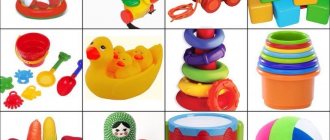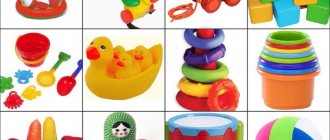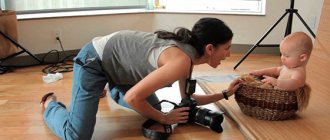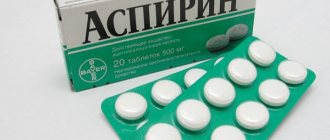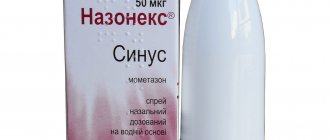Important: If the child has already had an ultrasound, it is advisable to bring data from previous ultrasound examinations. This will help the doctor assess the dynamics of changes.
Preparation for ultrasound of the upper abdomen (liver, gall bladder, pancreas, spleen) in children
Preparation for ultrasound of the abdominal organs for children in the first year of life:
Ultrasound of the abdominal organs in infants is optimally performed when the last meal was 2 hours before the examination, i.e. You can make an appointment with your doctor before your next feeding.
Preparation for ultrasound of the abdominal organs for children over one year old:
Ultrasound of the abdominal organs is performed on an empty stomach in children over one year of age.
Two days before the test, foods that contribute to increased gas formation (bread, fruit, sauerkraut) are excluded from the diet.
On the day of the study, it is recommended not to eat anything (including chewing gum, sweets), not to drink anything, and not to brush your teeth.
Fulfillment of these conditions is extremely important, because otherwise, it is impossible to reliably assess the condition of the internal organs; they will be partially covered (shielded) by the contents of the stomach. Swollen intestinal loops also complicate the study, so consult your doctor about the need to take antifoam medications (for example, espumisan) in advance.
Preparation for examination of the kidneys and urinary tract in children
Approximately 1.5 - 2 hours before the time of the expected ultrasound, the child should urinate and then drink water. It should be remembered that the child must urinate first and then drink water. Instead of water, you can offer tea, compote; you should not give sparkling water and milk.
These recommendations are designed to ensure that the study is as informative as possible. Organs are better visible (visualized) when the bladder is moderately full and there is no excess gas formation in the intestines (this is why the point about milk and carbonated water is indicated).
Approximate amount of fluid recommended depending on age:
- Up to a year – we cannot control the process
- 1-2 years - how much he drinks, preferably at least 100 ml (half a glass);
- 3-7 years - 1 glass;
- 8-11 years - one and a half glasses;
- teenagers - 2 glasses;
Types of ultrasound examinations for a child (ultrasound) that do NOT require special preparation before performing:
- Ultrasound of the brain (neurosonography)
- Ultrasound of the heart (EchoCG)
- Ultrasound of the hips and other joints
- Ultrasound of the thyroid gland
- Ultrasound of the thymus (thymus gland)
- Ultrasound of lymph nodes and other superficial structures
Important: All types of ultrasound are best carried out before other studies (for example, taking a blood test), and those that do not require special preparation (see above) - on a full stomach so that the children are calm, do not cry, and the examination is as complete as possible. full-fledged.
To make an appointment for an ultrasound, call
Call and our administrators will definitely help you
8
you can also:
or
Cost of ultrasound examinations
| Service | Price | Note |
| Ultrasound and Doppler diagnostics | ||
| Echokariography with Doppler (ECHO-CG, ultrasound of the heart) | 2800 | |
| Complex transcranial Dopplerography of the vessels of the head and cervical spine | 3500 | |
| Transcranial Dopplerography of head vessels | 2200 | |
| Transcranial Dopplerography of cervical vessels | 2200 | |
| Neurosonography in children under 1 year of age with color Doppler mapping of cerebral vessels | 1900 | |
| Ultrasound of the liver + color Doppler mapping of blood vessels | 1200 | |
| Ultrasound of the abdominal organs (liver, gall bladder, pancreas, spleen) + color Doppler mapping of blood vessels | 2300 | |
| Ultrasound of the abdominal organs (liver, gallbladder, pancreas, spleen) with determination of gallbladder function (“test breakfast”) + color Doppler mapping of blood vessels | 3300 | |
| Ultrasound of the abdominal organs (liver, gall bladder, pancreas, spleen) with water-siphon test and color Doppler mapping of blood vessels | 3300 | |
| Comprehensive ultrasound of the abdominal organs, including kidneys, adrenal glands, bladder + color Doppler vascular mapping | 3500 | |
| Ultrasound of abdominal vessels (abdominal aorta, inferior vena cava, etc.) + Doppler | 1900 | |
| Ultrasound of the kidneys, adrenal glands, bladder + color Doppler mapping of blood vessels | 2500 | |
| Ultrasound of the kidneys, adrenal glands, bladder, with determination of the functional state (before and after urination) + color Doppler mapping of blood vessels | 3300 | |
| Ultrasound of the bladder with determination of residual urine | 1500 | |
| Ultrasound of the kidneys + color Doppler mapping of blood vessels | 1500 | |
| Ultrasound of the adrenal glands | 700 | |
| Ultrasound of the pelvis (abdominal access) + color Doppler mapping of blood vessels | 2500 | |
| Ultrasound of the scrotum + color Doppler mapping of blood vessels | 2000 | |
| Ultrasound of the thyroid gland + color Doppler mapping of blood vessels | 2000 | |
| Ultrasound of the thymus gland + color Doppler mapping of blood vessels | 1900 | for children of the first 2 years of life |
| Ultrasound of pleural cavities | 1900 | |
| Ultrasound of regional lymph nodes | 600 | for one area |
| Ultrasound of the mammary glands and regional lymph nodes + color Doppler mapping of blood vessels | 2500 | |
| Ultrasound of soft tissues | 1900 | for one area |
| Ultrasound of the paranasal sinuses | 500 | |
| Ultrasound of the hip joints in children under 1 year of age | 1900 | |
| Ultrasound of joints | 2500 | two joints of the same name are examined |
| Ultrasound of the veins of the upper extremities | 2500 | |
| Ultrasound of the veins of the lower extremities | 2500 | |
| Vascular Doppler | 1500 | |
| (Ultrasound includes 2 photos) payment for additional photo | 50 | |
| Electrocardiography | ||
| ECG (standard, 12 leads, without interpretation) | 600 | |
| ECG (standard, 12 leads, with interpretation) | 1500 | |
| ECG (with orthostatic test and physical activity) | 1800 | |
| ECG (on long tape) | 2200 | |
| FVD | ||
| External respiration function | 1000 | as part of the consultation |
Preparing for research
Preparation for diagnostic procedures
General rules for preparing for an ultrasound:
In order to obtain the most complete information about the condition of the organs, you must carefully follow all the recommendations that your local doctor recommends. Gases in the intestines, a high degree of obesity, an open wound and bandage in the area being examined, as well as high activity of the patient during the examination can interfere with the ultrasound and distort its results. To get rid of the accumulation of gases in the intestines (in preparation for studies of the spleen, gallbladder and pancreas), 3 to 4 days before the scheduled study, it is necessary to exclude raw vegetables rich in fiber from the diet; fruits; legumes; black bread; whole milk; carbonated drinks; high-calorie confectionery products. If a child is prone to increased gas formation, then it is recommended to take activated carbon, festal, mezim-forte, espumizan, etc. If the child is receiving any medications at the time of research, it is necessary to inform the doctor conducting the research about this.
An abdominal ultrasound is performed on an empty stomach, so you should refrain from eating 8–12 hours before the procedure. When preparing for an ultrasound of the abdominal organs in infants, you can feed the baby as usual, but you must come to the ultrasound in such a way as to come 3 hours after the last meal. If the child is fed not with milk, but with formula, the interval should be 3.5 hours, since the artificial formula takes longer to digest. It is advisable to avoid vegetable and fruit mixtures. If necessary, the baby can be supplemented with clean drinking water (no sugar!). Any type of tea is not allowed.
Preparation for an ultrasound of the kidneys: If you are of normal weight, preparation for an ultrasound of the kidneys is not required. Excess weight and increased gas formation in the intestines make it difficult to perform ultrasound diagnostics, and in these cases, the same preparation for an ultrasound of the kidneys is recommended as for the examination of the abdominal organs.
Preparation for ultrasound of the adrenal glands: 3 days before the examination, a slag-free diet is prescribed, excluding products of animal origin. You can eat cereals, legumes, potatoes, vegetables, fruits, nuts and seeds, black bread or grain crispbreads, pasta made from wholemeal flour, sweets - honey and dried fruits, drinks - herbal teas and natural (not store-bought) juices . The morning before the ultrasound, you must take a laxative (as prescribed by your doctor). The adrenal glands are examined on an empty stomach. It is enough to simply bring infants to the procedure 3–3.5 hours after the last feeding.
Preparing for an ultrasound of the bladder: Ultrasound diagnosis of the bladder is performed with a full bladder. When preparing for an ultrasound of the bladder, it is important to drink 30–40 minutes before the examination, 200–800 ml of non-carbonated liquid, enough for the doctor to get a clear image on the monitor. This discrepancy in numbers is due to the fact that each organism has individual characteristics, and the optimal amount of fluid is determined experimentally. If it is difficult for a small patient to drink a large amount of water at once, you can start drinking 1–1.5 hours before the ultrasound session and do this in small portions. Ideally, at the time of the ultrasound, the child should feel a pronounced urge to urinate.
Preparation for an ultrasound of the bladder with determination of the volume of residual urine is carried out in two stages: first, a classic ultrasound of the bladder is performed, then the child is asked to visit the toilet, after which the study is repeated, paying attention to how much urine remains in the bladder, that is, fully whether it is emptying.
Preparing for an ultrasound of the bladder in an infant The baby will need to be fed or watered 15–20 minutes before the procedure.
Preparing for an ultrasound of the thyroid gland: When preparing for an ultrasound of the thyroid gland, you only need to find out and inform the diagnostician the weight and height of the child at the time of the examination. To prevent a gag reflex, you can bring a small patient on an empty stomach.
Preparation for pelvic ultrasound for boys: Ultrasound of the scrotum in boys does not require preparation; it is enough to carry out the usual hygienic care of the external genitalia before the procedure.
to a prostate ultrasound with a full bladder. Preparation for this study is carried out according to the same scheme as preparation for an ultrasound of the bladder (see above).
Preparation for a pelvic ultrasound for girls: An ultrasound of the uterus and appendages in girls is performed with a full bladder. Preparation is carried out in the same way as preparation for an ultrasound of the bladder (see above).
Preparing a newborn for a screening ultrasound at 1–1.5 months: A planned screening ultrasound is prescribed for each baby at the age of 1–1.5 months and necessarily includes an ultrasound of the brain (neurosonography), kidneys and hip joints. All three ultrasounds can be performed in one session. No preparation needed. If necessary, an additional ultrasound of the thymus gland (thymus), heart and abdominal organs is performed. There is no need to prepare for the first two studies, but for an ultrasound of the abdominal cavity it is necessary to maintain a 3-3.5 hour interval after the last feeding (strictly with breast milk or formula). You can feed the baby again immediately after the ultrasound is completed.
Rules for preparing patients for laboratory tests
Blood test:
All blood tests are taken before radiography, ultrasound and physiotherapeutic procedures.
If the patient is dizzy or weak, warn the treatment nurse about this - your blood will be taken in a lying position. · Complete blood count, determination of blood group, Rh factor, biochemical tests are taken on an empty stomach, no less than 12 hours after the last meal. · 1-2 days before the examination, exclude fatty and fried foods from the diet. · On the eve of the examination, have a light dinner and good rest. · On the day of the examination, you should not have breakfast (including drinking tea, coffee or juice), avoid physical activity, take medications, and refrain from smoking. · If you have difficulty stopping medications, you must consult with your doctor. · Drinking water does not affect blood counts, so you can drink water. · We recommend that all tests be taken in the morning, due to the fact that blood counts change significantly during the day and the standards are calculated for this period of the day.
Rules for collecting stool for research.
Feces are collected in a separate container without special preparation. Feces are collected from different parts of the stool, no more than a tablespoon. Do not mix feces with urine. Observe this condition during any stool examination.
Rules for collecting urine for research using the Nechiporenko method.
· Before collecting urine, be sure to thoroughly clean the external genitalia with soap. · An average portion of morning urine is collected for testing. The first portion is discharged into the toilet, the middle portion into a container for collecting urine, and the last portion into the toilet. · Urine is delivered to the laboratory within 1 - 2 hours. The sample must not be stored in hot or cold conditions. It is advisable to write your name on the urine container.
Rules for collecting urine for general analysis.
· For a general urine test, it is better to take the first morning sample, as it is the most informative. · Before collecting urine, thoroughly clean the external genitalia with soap. · Urine is collected in a clean container, mixed thoroughly, then 20-50 ml is poured into a container for transportation and, as quickly as possible, within 1-2 hours, delivered to the laboratory.
Rules for collecting daily urine for oxalates, protein, etc.
· Urine is collected within 24 hours, observing the usual drinking regime. · To do this, prepare a clean container with a wide neck and a lid, with a volume of at least three liters. · The first portion of urine in the morning is released into the toilet. All subsequent portions are collected in a small container and poured into a larger one. The last portion is collected the next morning at the time the collection began. During this time, urine should be stored in the refrigerator. · The entire volume of urine is then accurately measured and recorded on the referral. · After this, the urine is thoroughly mixed and poured into a transport container of approximately 50 ml.
Rules for urine collection according to Zimnitsky.
· Urine is collected during the day from 6 a.m. to 6 a.m. the next day in 8 glass urine collection containers. Labels are attached to each of them indicating the time of urine collection. · One day before the collection, stop taking diuretics (after preliminary consultation with your doctor). · At 6 o’clock in the morning you need to urinate in the toilet, then all urine is collected in separate containers every 3 hours: from 6 to 9 o’clock; from 9 to 12 o'clock; from 12 to 15 hours; from 15 to 18 hours; from 18 to 21 hours; from 21 to 24 hours; from 24 to 3 o'clock; from 3 to 6 o'clock. · If the volume of the main container is not sufficient, then it is necessary to take additional dishes and the corresponding time period is indicated on this additional container. · If there is no urine within a 3-hour period, then the corresponding container remains empty, but is delivered to the laboratory. · During collection, the usual water and drinking regime is observed. The amount of liquid taken is taken into account: water, tea, coffee, first courses, as well as intravenous infusions. This amount must be reported to the guard nurse and recorded on the analysis form. · The collected urine is stored in a cool, dark place. · On the morning of the end day, the collected urine is delivered to the laboratory.
Rules for taking scrapings for enterobiasis.
Scraping for enterobiasis from the surface of the perianal folds in the anus is carried out in the clinic. It is advisable not to wash the child in the morning, even after defecation.
Indications for abdominal ultrasound in children
Referral for abdominal ultrasound
It is given to the child by a pediatrician or gastroenterologist.
- Newborns at one to one and a half months are prescribed a diagnostic ultrasound to identify congenital pathologies or make sure that everything is fine with the baby.
- Diagnosis is necessary if the child has suffered an injury to internal organs, complains of discomfort in the upper abdomen or girdle pain, a feeling of heaviness in the right hypochondrium, bitterness in the mouth, if he has increased gas formation or yellowness of the sclera and skin.
How is an abdominal ultrasound performed in children?
You can do an ultrasound of the abdominal organs of a child at our North-Western Center for Evidence-Based Medicine, at St. Petersburg, Prosveshcheniya Ave., 14/4. An abdominal ultrasound is usually performed in a separate room. Parents may accompany their child to provide support. The child will be asked to remove outer clothing and lie down on the couch. The room is usually dark, so the images on the computer screen are clearly visible. An ultrasound technician (USD) will apply a clear, warm gel to the skin of your abdomen. This gel helps transmit sound waves. He will then move the sensor (transducer) over the gel. The transducer emits high-frequency sound waves, and a computer measures how the sound waves bounce off the organs. A computer turns these sound waves into images for analysis. The procedure usually takes less than 30 minutes.
Ultrasound of the abdominal cavity is painless. The baby may feel a slight pressure on the abdomen as the sensor moves across the body, and the gel may feel wet or cold. The child must lie still during the procedure so that the sound waves can effectively reach the desired area. Children may cry, especially if they are restrained, but this will not interfere with the procedure.
The cost of ultrasound of the abdominal organs (liver, gall bladder, pancreas and spleen) for children and adults is 1400 rubles
abdominal ultrasound
The cost of ultrasound of the abdominal organs (liver, gallbladder, pancreas, spleen, as well as kidneys and bladder) for children and adults is 1800 rubles
abdominal ultrasound
Preparing a child for an abdominal ultrasound: algorithm for children over 1 year of age
Before an abdominal ultrasound, preparation for the examination of an older child involves additional restrictions. In addition to fasting for 4-8 hours before the session, it is important to follow a special diet for 2-3 days. This will help reduce gas formation in the intestines, which reduces the reliability of the examination results. Preparing a child for an ultrasound of the abdominal organs involves excluding some foods from the children's menu for a couple of days:
- raw vegetables,
- fresh fruits,
- legumes,
- milk,
- baking,
- sweets,
- fatty, fried foods,
- carbonated drinks.
You can eat light meals that are easily digestible. For example:
- porridge boiled in water,
- boiled fish and chicken,
- boiled eggs,
- cheese, low-fat cottage cheese.
If your baby has digestive problems, the day before the ultrasound you can take medications that regulate digestion, which your doctor will recommend. It is recommended to empty your bowels before the procedure. It is better not to drink an hour before the examination. As a last resort, you can give the child just a little water.

